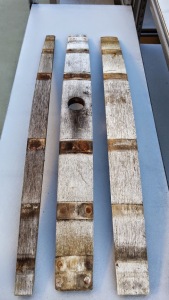Nearly a century old, California State Route 1, or simply Hwy 1, connects Southern and Northern California along its coast. However, more importantly it connects people with coastal access while offering great views of the Pacific Ocean. Yet, lying roughly halfway between San Francisco and Los Angeles, is maybe Hwy 1’s most significant contribution with a spectacular stretch of thoroughfare along the Central Coast – arguably the most scenic road in the world.

Beginning to end
At the south end, Hwy 1 starts in Dana Point and moves north through Orange and Los Angeles Counties as Pacific Coast Highway. As it leaves the Greater L.A. area heading west and north, it slides along the flat farmlands of Oxnard in Ventura County before turning west again towards Santa Barbara and moving away from Southern California.
As the road enters the Central Coast, it goes up San Luis Obispo County beach region and this where Hwy 1 really comes into its own as a highway like no other. It strolls through the rugged coastline north along Big Sur into Monterey County – we’ll get back to this slice of heaven in a moment.
After the undulating shoreline of Monterey, the highway turns east before heading down into Santa Cruz. The road, called the Cabrillo Hwy in this region, shoots north again towards the San Francisco Peninsula and its own rocky prefectures. After the Golden Gate Bridge, Hwy 1 becomes a two-lane road again as it winds it way along the western edge of Sonoma County before ending its scenic route along the Redwood-lined Mendocino coast.

Big Sequoias abound in Big Sur.
Big Sur Highway
Nearly any part of this famous road is worth driving, but the diamond in this jewel of scenery is the Central Coast and most notably Big Sur. Words can’t describe the beauty, natural tapestry and pure breathtaking scenery that offers an experience unlike any other.
If you’re looking for a happening place with restaurants, hotels and parties, this ain’t the place. In fact, it’s one of the least populated areas in California. From the time one leaves Morro or Monterey Bay on either end and heads north or south respectively, you had better have plenty of gas and maybe a snack to get you by as you roll up and down along the back and forth heaving of a ocean edge.
Essentially, the picturesque point-to-point drive in particular that we’re talking about is from the small towns of Cambria to Carmel. There’s so much to see, you have to go slow and stop sometimes to take in the sheer magnificence of Big Sur. The only sounds you’ll hear are nature, whether it’s the ocean waves, the many birds, the California seal lions or the occasional waterfall.

Long … and fun 100 miles
Plan to spend a least half a day traversing this stunningly scenic 100 mile span. And note that you can actually drive the distance from Cambria to Carmel faster by backtracking east and going inland and up/down Hwy 101 and then west back to Hwy 1 than heading up the coastline … but what fun would that be?
Sometimes called the Big Sur Highway, exploring this expanse offers rewards beyond comprehension. From towering bridges and 1,000 foot cliffs with a crashing Pacific below, this awe-inspiring unspoiled land is filled with treasures to be discovered. There are giant Redwood forests (Sequoias) that can capture your imagination with real life sights and sounds. From Monterey Bay National Marine Sanctuary in Carmel to Moonstone Beach in Cambria, there are endless beaches to find and enjoy where bird and sealife abound. Here’s a tip: check out the purple sand at Pfeiffer Beach.

Pfeiffer Big Sur State Park really does have sand that is purple-tinged.
Unless the weather says otherwise – this craggy Big Sur coast has its fair share of nasty conditions including dense fog in the summer – a convertible is the preferred method of travel up and down this jaw-dropping and celebrated road. The views are dizzying and drivers should be careful.
Likely the world’s most scenic road, this great driving tour of California State Route 1 should be on anyone’s to-do or bucket list. The legendary twisting hugging and aptly named Hwy 1 road is waiting for you.
Source: Big Sur Chamber of Commerce, MapEasy’s Guidemap to California Hwy 1
Cheers,
Daryle W. Hier
.















